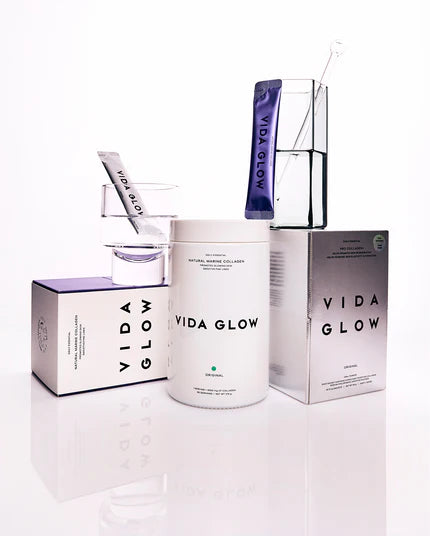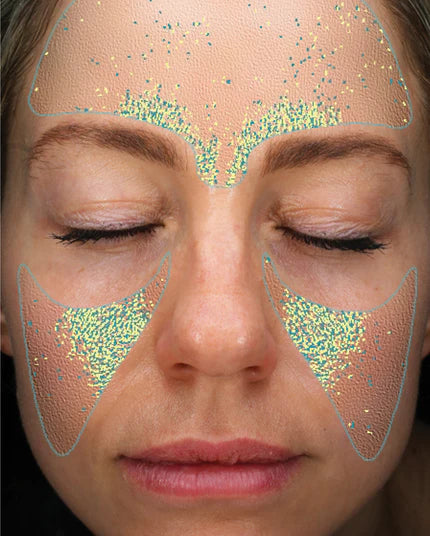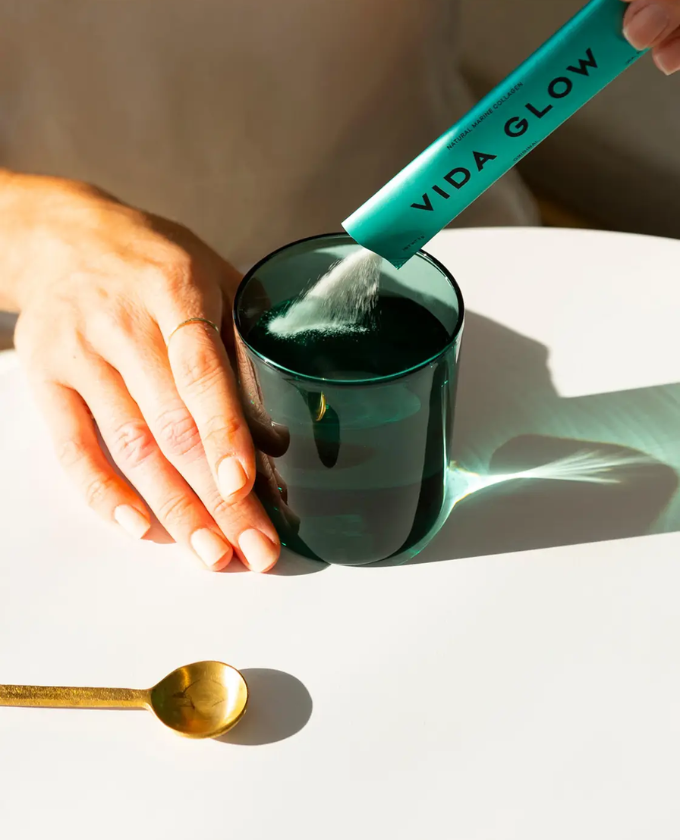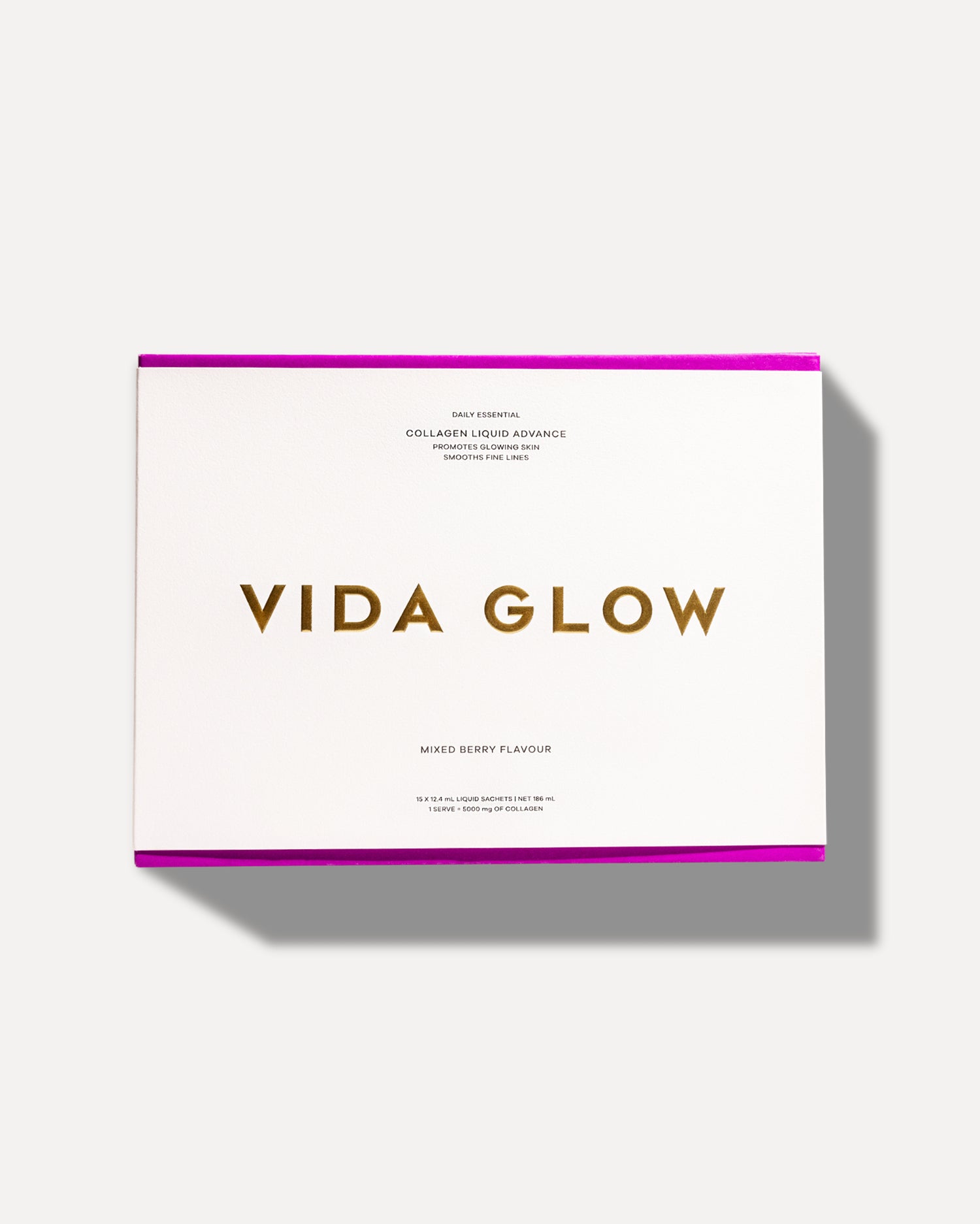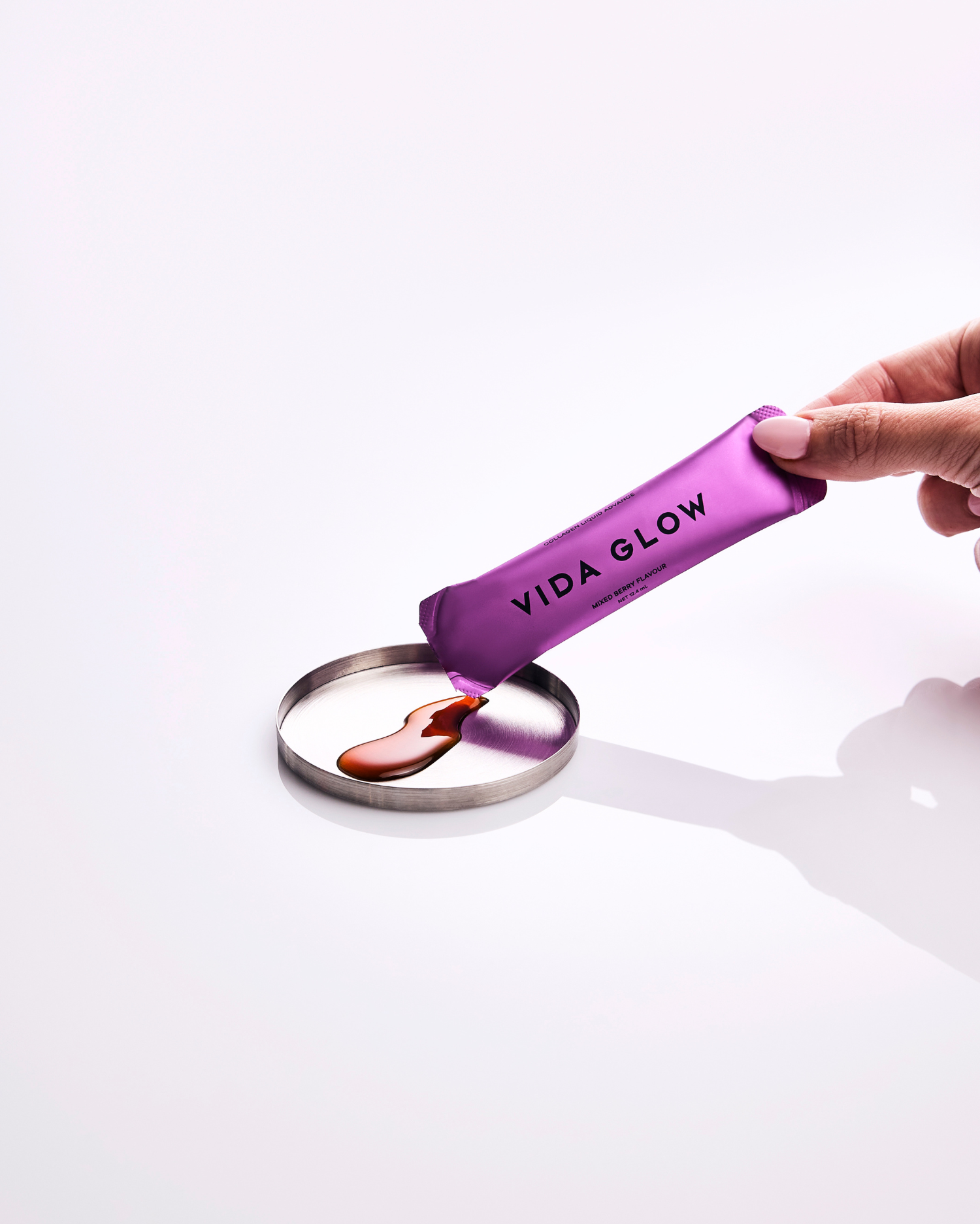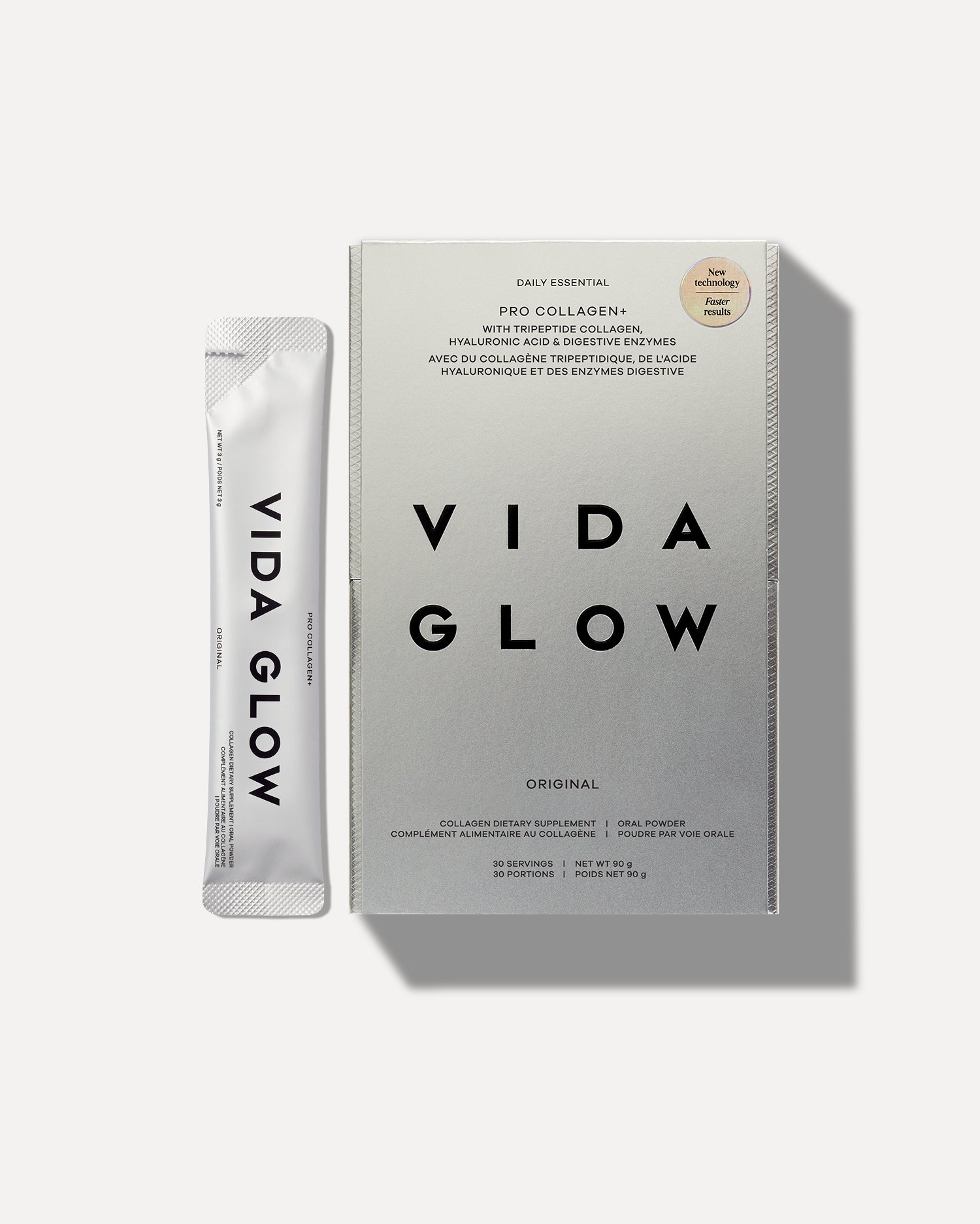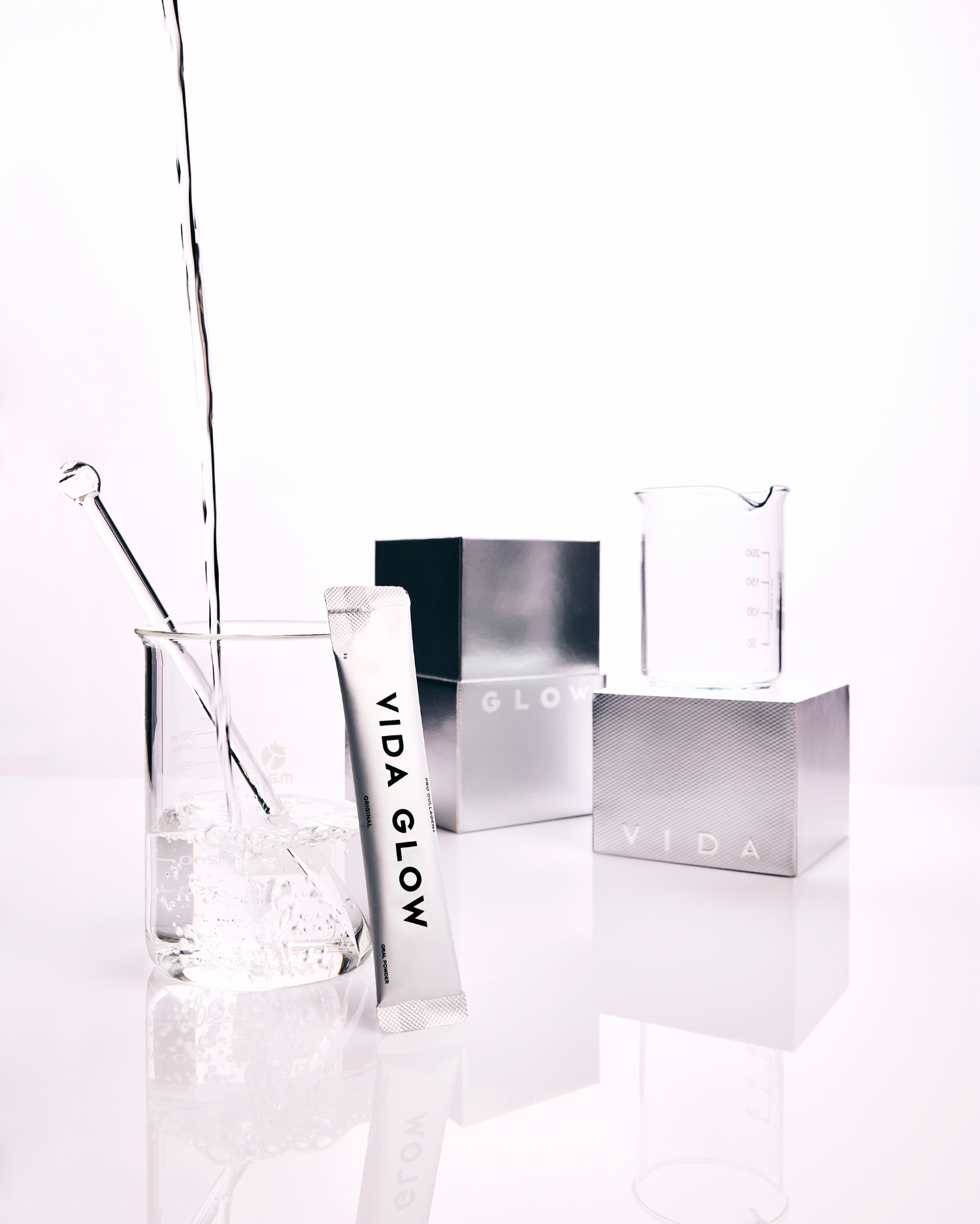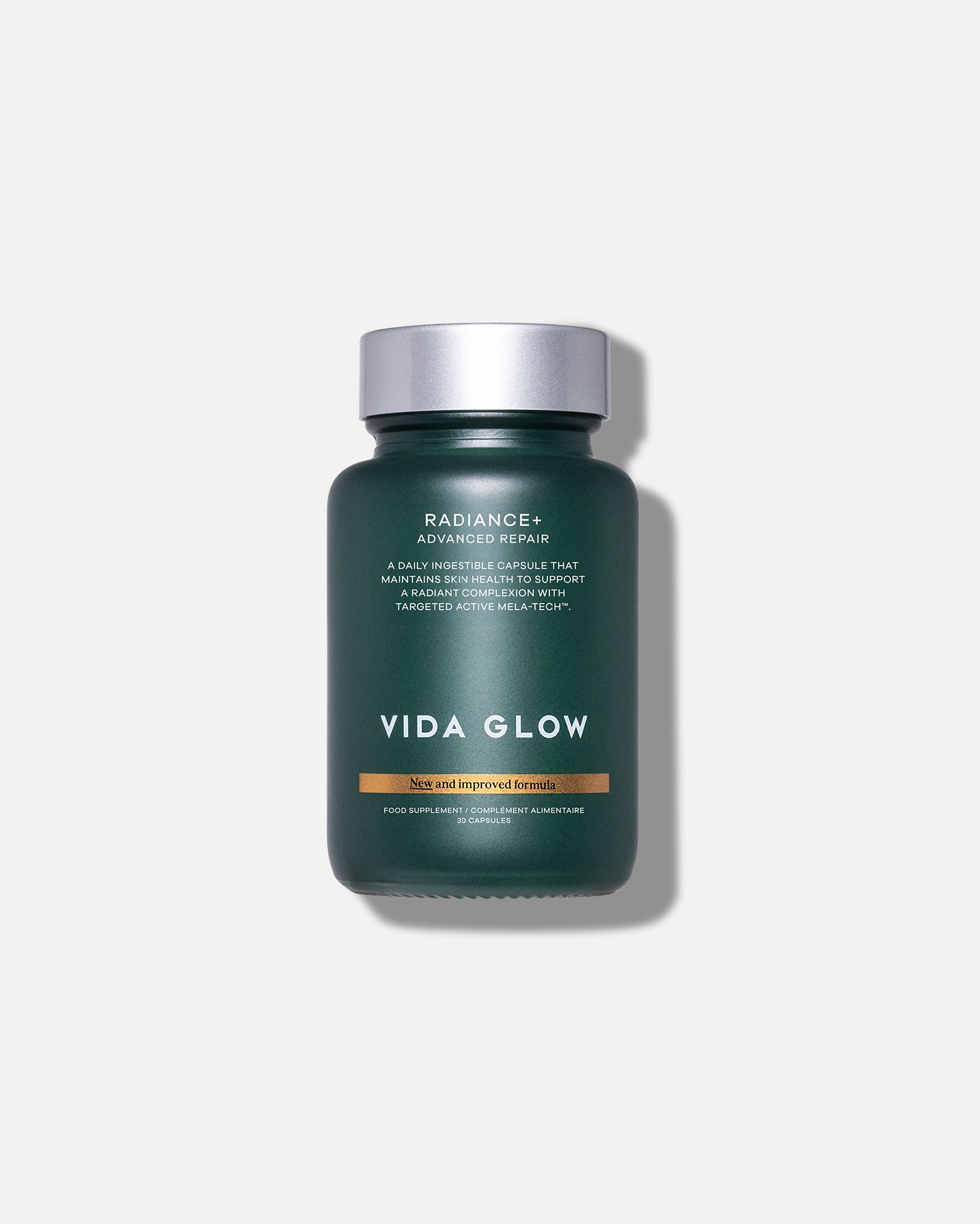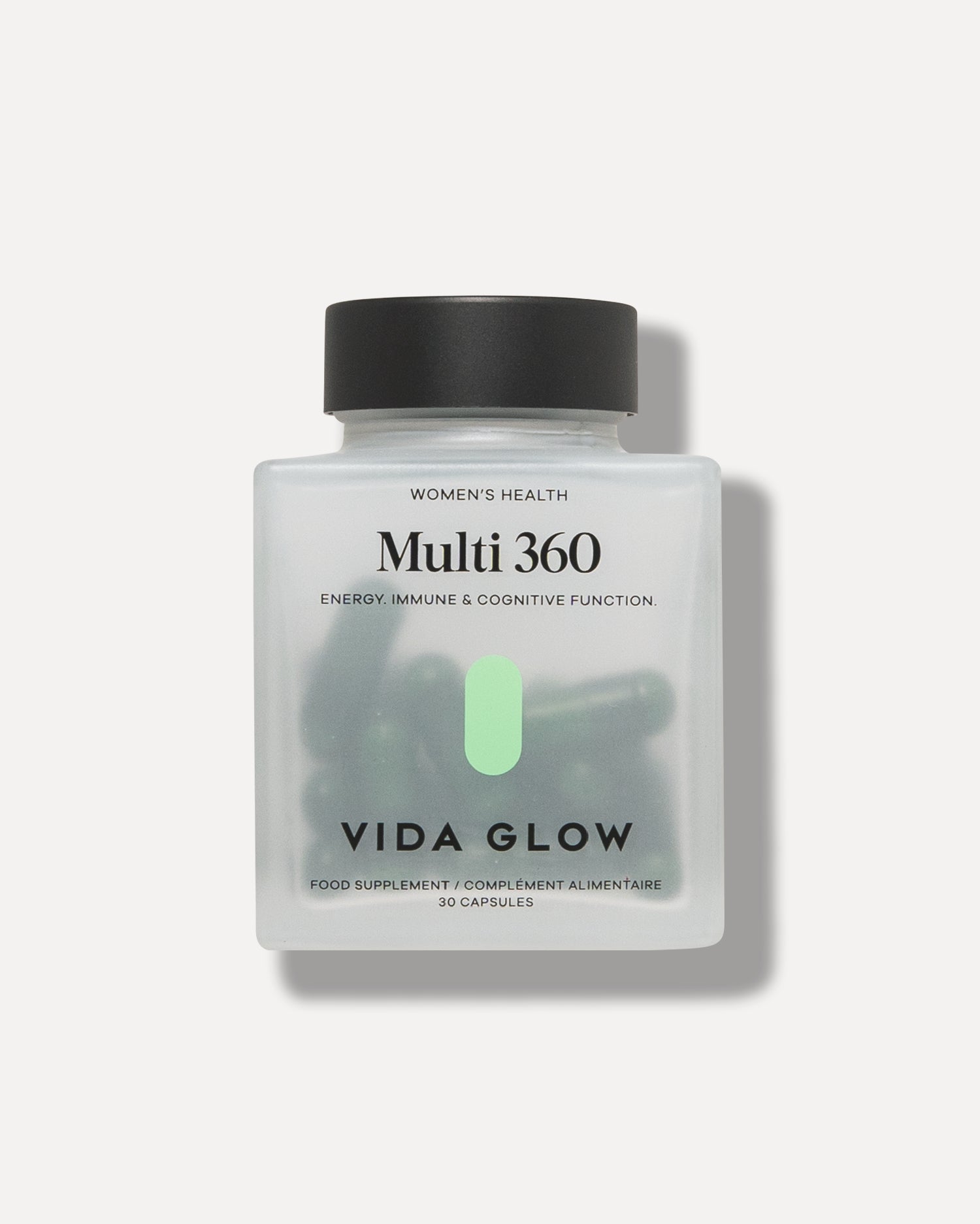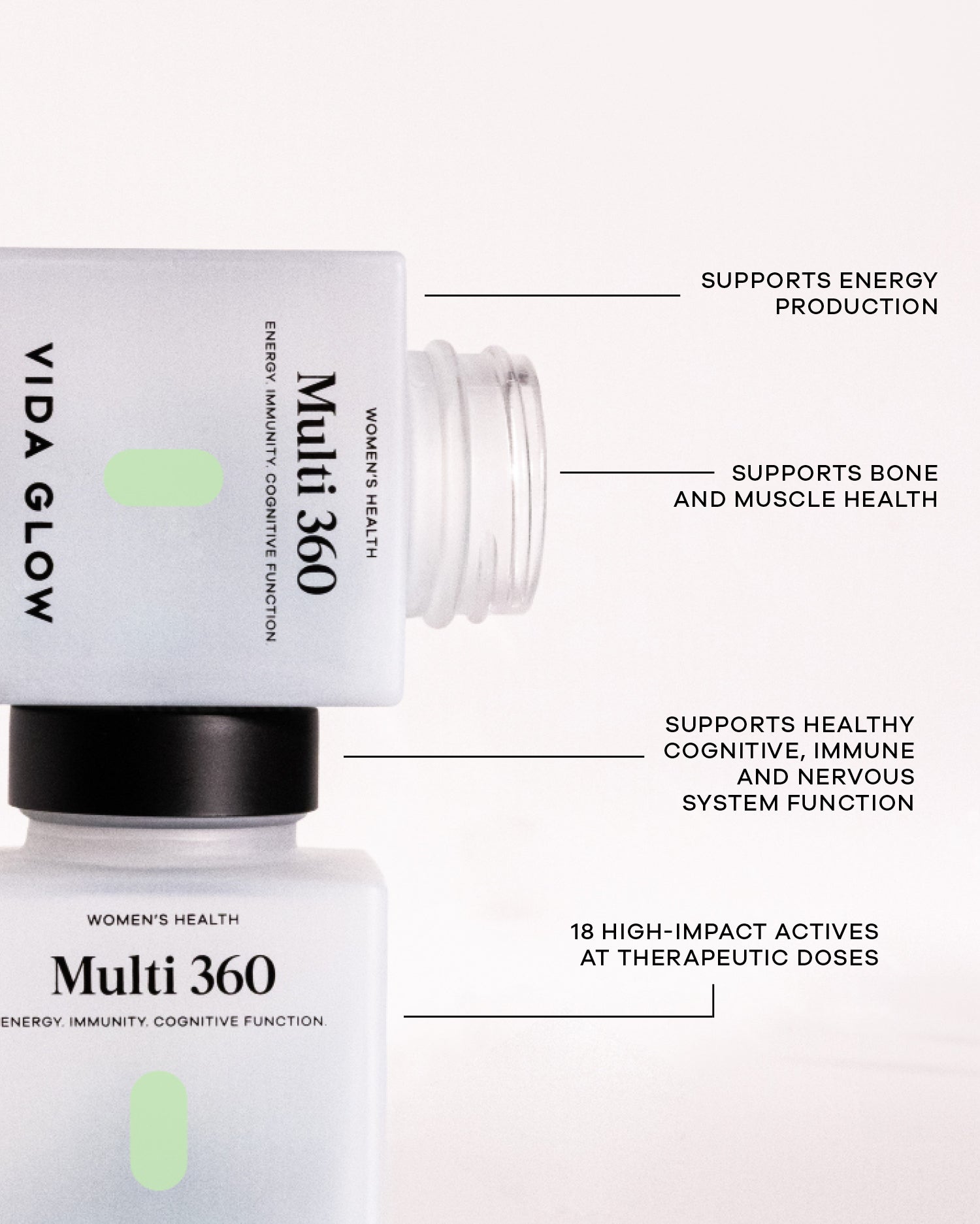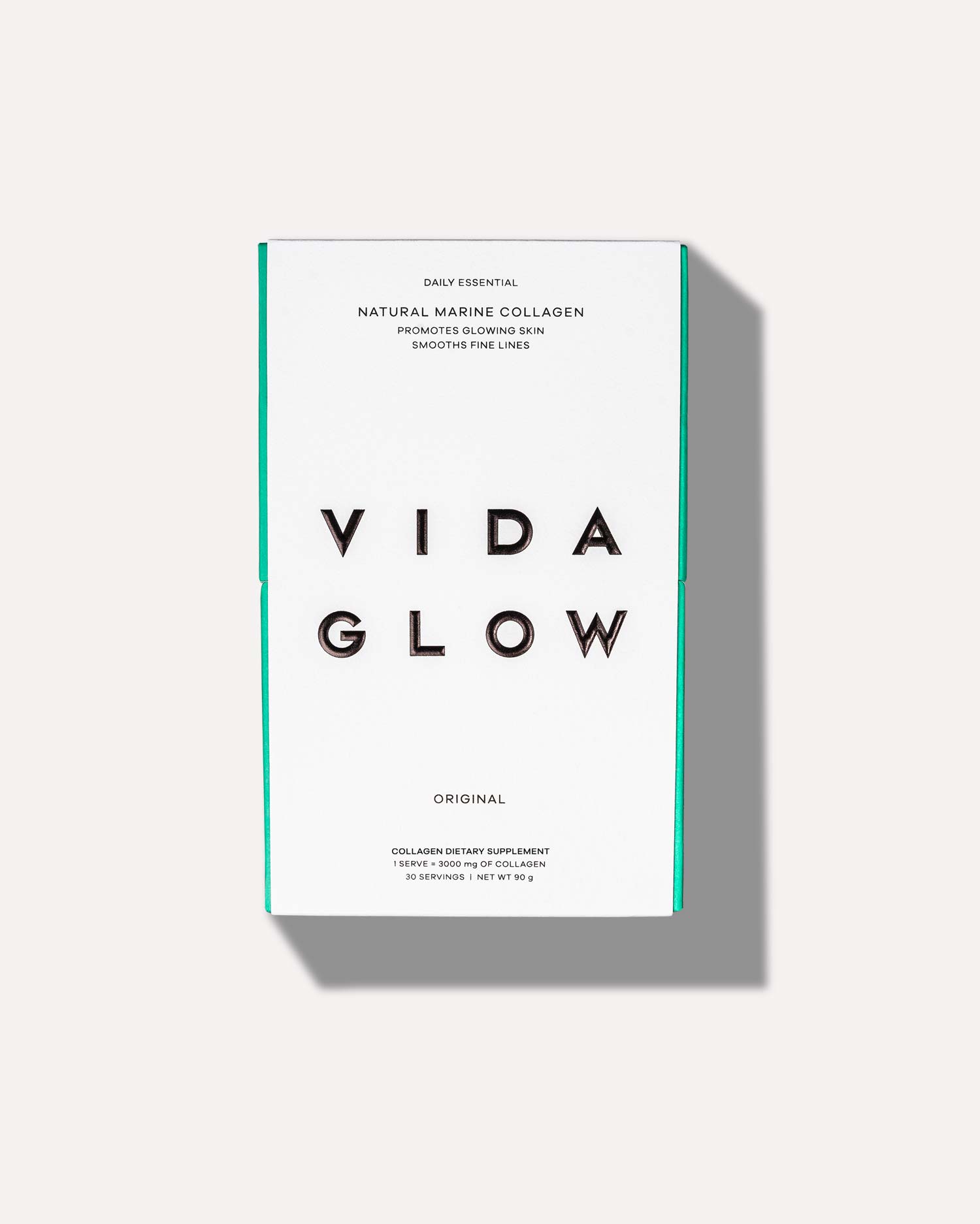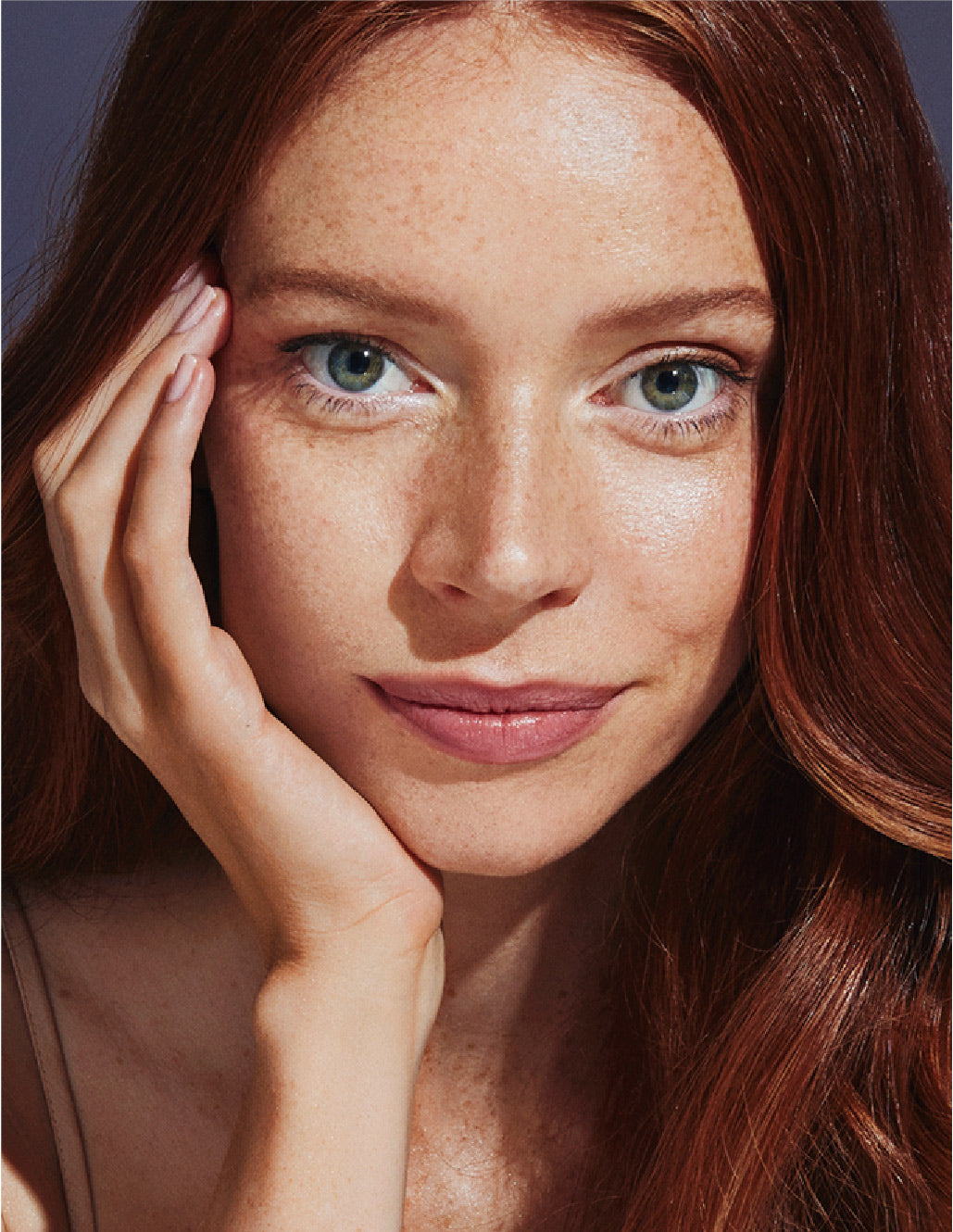As we face time under the sun, modern living starts to show on our skin. Whether it’s sun spots, post-acne marks, melasma or tired eyes, pigmentation is difficult to avoid. And as nature would have it, it can be challenging to treat too.
So, we’ve enlisted the help of Vida Glow’s Skin Professionals to share their expertise in pigmentation. Here, dermatologist Dr Philip Tong, dietitian Chloe McLeod and beauty therapist Jocelyn Petroni discuss the causes of pigmentation – and how to treat it with a bidirectional skincare regimen. That is, a skincare routine that works from the inside out and outside in for total skin rejuvenation.
Read-up before brightening-up
Pigmentation is known for being persistent, making it disheartening to improve.
Instead of compromising skin with high-strength actives, harsh lasers and stinging peels, take a step back. Refresh your pigmentation plan with an objective, science-backed mindset to understanding skin’s function and the role of melanin.
At first sight, “pigmentation is light brown or dark brown marks, particularly on sun exposed areas,” says Dermatologist Dr Philip Tong. But deep down, “pigmentation comes from a particular cell type underneath the skin, called melanocytes.” This is where you’ll find skin’s pigment, melanin.
Melanin gives skin its colouring and creates beauty marks like freckles, and yes, pigmentation. Melanin also supports skin in its ultimate function – to protect the body – as a part of skin’s repair process.
As Dr Tong explains, when skin is inflamed, “it attracts a lot of immune cells to try to repair the damage. Afterwards, the amount of pigment in the skin is increased and melanin is used as a protective ‘umbrella’ as skin heals,” says Dr Tong.
These concentrated spots of melanin are skin’s homemade band-aid – but from a beauty point-of-view, they’re hyperpigmentation.
Know your pigmentation
Skin tone imperfections like pigmentation take different forms, each with their own causes and tailored treatments. Make time to get familiar with your spots, marks and shadows.
Sun and age spots
Known as sun and age spots, this type of hyperpigmentation appears as long-lasting freckles. Clustered around high, sun-prone points of the face and body, these spots are triggered by UVA ray sun exposure with age. In an effort to protect itself, “when the skin’s top layer senses UV exposure, melanocytes start producing additional pigment,” says Dr Tong. “These packets of pigment, called melanosomes, deliver melanin to cells in the top layer of the epidermis – and that’s what we see as pigmentation on the top layers of the skin.”
Post-inflammatory hyperpigmentation
Marks left behind by skin conditions, like acne or eczema, are post-inflammatory hyperpigmentation (PIH). PIH is caused by trauma to the skin, like picking or itching. Dr Tong explains: “After injury and inflammation from external triggers heal, you can develop post-inflammatory hyperpigmentation. Skin is red, then it goes brown and that's the type of pigmentation that arises from post-inflammatory triggers.”
Melasma
Melasma is dark or mask-like shadows, brought on by hormonal changes during pregnancy or medication like the contraceptive pill. “Dermal pigmentation – where pigment is in the dermis – is common in a number of skin conditions, but is most commonly found in melasma. Melasma can be both epidermal, meaning the top layers of the skin, or dermal, just underneath skin – and that is particularly hard to shift,” he explains.
Melasma is most prominent on sun-affected areas of the face, like the highs of the cheeks, forehead and upper lip. And while it usually has a brown appearance, Dr Tong notes that in very severe cases, dermal melasma might appear blue.
Dark under-eyes
Tired, dark under eye circles are relatively straight-forward. The skin underneath the eyes is ten times finer than the rest of the face. So purple-blue capillaries and shadows cast by puffy eyes appear more pronounced.

Follow the doctor’s preventative orders
“There are so many influences on pigmentation, it's difficult to protect oneself from,” says Dr Tong. This means a protective skincare regimen and trigger-conscious lifestyle are essential in preventing and treating pigmentation.
“We can slow the pigmentation process down from a lifestyle perspective,” says Dr Tong. “I tell my patients to always use sun protection, that includes not just wearing sunscreen, but actually avoiding the sun where possible.”
Dr Tong recommends limiting time at the beach between the hours of 10am and 3pm, wearing a hat and wearing sunscreen underneath SPF-based makeup.
And skin therapist Jocelyn Petroni agrees. “The most important thing you can do to prevent pigmentation is to wear sunscreen. If you’re not wearing it every day, the rest of your skincare regimen is a waste of time,” she adds.
When it comes to post-inflammatory hyperpigmentation, “if you have skin conditions such as acne or eczema,” says Dr Tong, “you should have those treated to prevent post-inflammatory hyperpigmentation.” To remove the temptation, prevent picking acne with a pimple patch, or use niacinamide or medicated topical products to calm skin down, suggests Dr Tong.
By removing the trigger for melanocytes to produce pigment, Dr Tong says these protective strategies help prevent the effects of sun on the skin and inflammation across all pigmentation concerns.
Ingest the rainbow, brighten your skin
Caught up in convenience and comfort-eating, “the wider popular are missing out on important nutrients such as vitamin C, vitamin A and vitamin E,” says dietitian Chloe McLeod.
“And we know antioxidants are important when it comes to health of our skin. There’s evidence that consuming high concentrations of carotenoids, vitamin C and zinc help increase skin brightness overall and reduce dark circles,” shares McLeod.
Vitamin C
As a potent antioxidant, vitamin C is a mainstay in brightening skincare regimens – and it’s just as beneficial when ingested. “Vitamin C scavenges free radicals, reduces damage to cells, and helps to improve the health of tiny capillaries, like under the eyes,” says McLeod. “This encourages circulation across the complexion for improved radiance and brighter under eyes,” she explains.
In targeting specific spots of pigmentation, “vitamin C also reduces tyrosinase activity, which is an enzyme involved in melanin synthesis. This inhibits the pathway of hyperpigmentation and reduces its production.”
Zinc
As a reparative mineral, McLeod says “zinc is important in the healing process of significant trauma to the skin.” By soothing inflammation and assisting skin cell repair, “zinc can also help reduce the day-to-day ‘wear and tear’ of being outside in the sun, or in a city where there’s pollution.”
Carotenoids
“Carotenoids are phytonutrients which are found in yellow, red and orange foods like sweet potato, red capsicum, oranges and carrots, for example. They’re not something our body is able to synthesise, so we need to consume them,” McLeod advises.
“From a skin health perspective, we know high doses of carotenoids have photoprotective properties, by absorbing both UVA and UVB radiation and stopping UV-induced free radicals,” Chloe McLeod says. “This helps decrease melanin production to reduce hyperpigmentation.”
To understand how pigmentation and oxidative stress are treated from within, McLeod explains how antioxidants are absorbed. Vitamin C, for example, “goes into the blood and it moves to the skin via a mechanism called a sodium-dependent transporter, which works like little doors to control all different mechanisms in the body.” This allows active ingredients like vitamin C, zinc and carotenoids to where they’re needed most to treat pigmentation – in the skin’s epidermis.
“The vitamin D-folate theory is also thought to dictate skin’s pigmentation,” adds McLeod. “There seems to be a balancing mechanism between vitamin D and folate, which is found leafy green vegetables, legumes and nuts. By maintaining levels of both vitamin D and folate, it’s proposed that we can also assist the skin’s healthy, natural pigmentation and reduce hyperpigmentation.”
Double-down with a bidirectional skincare regimen
For long-term skin health and a radiant complexion, piece together VG’s expert advice and embrace topical solutions and ingestibles in one brightening skincare regimen. With a bi-directional routine, you can consider all bases covered.
“There is emerging evidence in understanding how we can ‘bio-hack’ our nutrition to prevent damaging UV-related influences on our skin,” says Dr Tong. So, take Chloe McLeod’s advice and adopt an antioxidant-rich diet.
“Ensure you’re filling your plate with lots of different colours and make it as easy as possible for you to be consuming colourful fruits and vegetables,” McLeod recommends.
And “if you’re going to commit to supplements,” adds McLeod, “make sure you have your diet right. Without adequate consumption of antioxidant-rich fruits and vegetables, there is going to be more oxidative stress, which causes hyperpigmentation.”
“You want to be working from the best nutritional base you can, so that the investment you’re making in your skin is optimised,” continues McLeod. “The better your baseline, the more effective products like supplements will be.”
The same goes for topical skincare. Build a brightening regimen around ingestible active ingredients, like antioxidants, which support cellular repair and skin health from the inside out.
Then, for targeted topical solutions, Jocelyn Petroni says “you need a professional to be able to tell you where your pigment is and tailor a treatment program to you.” To enhance skin’s regeneration and glow, Petroni suggests starting a mild skin-brightening regimen with vitamin A and alpha hydroxy acids (AHAs) to lift dark marks and refine skin’s imperfections.
By understanding the science of pigmentation and skin tone perfection by prioritising skin health and antioxidant-rich treatments from the inside out. And, a generous slather of SPF goes a long way too.






